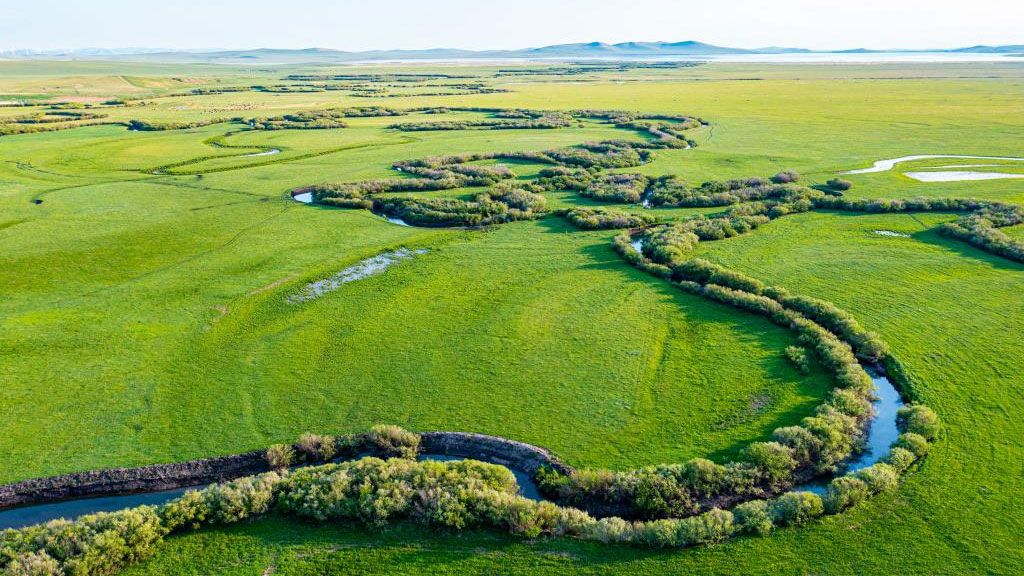Green efforts transform once barren land into oasis
LANZHOU, June 16 (Xinhua) -- On the southern fringes of Badain Jaran and Tengger, two large deserts covering 85,000 square km in China, Qin Zhaoping is testing the spray device for the fast-growing sand plants.
For Qin, a farmer in Hengliang Township, Wuwei City, northwest China's Gansu Province, such luxuriant vegetation was once beyond imagination.
Gansu, home to over 12 million hectares of sandy land, has been exploring a variety of new measures to bring a verdant look to the formerly barren land.
In today's desert area, photovoltaic panels provide shade for the plants, while efficient water-saving spraying facilities keep them thriving.
"The photovoltaic industry has been deeply integrated with local ecological protection endeavors," said Li Zhenhai, deputy director of the Wuwei development and reform commission.
Li added that over 1,300 hectares of desert plants have been grown in the photovoltaic sand control demonstration park in Wuwei, building up a solid green barrier to boost sand control.
In the eyes of local residents, harnessing photovoltaic panels for sand control is killing two birds with one stone and benefiting future generations. "It not only generates electricity and greens the sandy land but also increases our income," said Qin.
Placing straw checkerboard barriers has also proved an effective method to battle desertification, as they help reduce wind speed and can hold water used to help plants grow.
Yet as labor costs continue to rise, so do the costs of combating desertification. In response, Gansu has turned to technology for assistance.
In late 2020, a team led by Xu Xianying, a researcher at Gansu Desert Control Research Institute, developed a new generation sand barrier laying machine.
The efficiency is four to six times that of traditional manual operation, and the cost per hectare is reduced by 3,750 yuan (about 526 U.S. dollars), Xu explained.
In the meantime, multiple giant sandstorm observation towers have been erected along the Hexi Corridor. "The towers can monitor data on wind and sand flow, vegetation, soil and hydrology, and send them simultaneously to researchers," said Wang Duoze, an engineer at the institute.
Thanks to the government's decades of desertification control efforts, a once dried-up lake in Minqin County, administered by Wuwei, has been revived and several desert zones are now lush and green.
Results of a new round of national monitoring of desertification unveiled late last year showed that desertified and sandy land in Gansu decreased by 2,627 square km and 1,045 square km, respectively, compared with figures published in 2015.
Photos
Related Stories
- Guangdong carbon market closes lower
- Chinese researchers achieve carbon dioxide column concentrations
- Asia's largest carbon capture project put into use in E China's Jiangsu
- Carbon goals, green transition within reach
- Diversified carbon trading accelerates China's "dual carbon" goal
- China puts into use first offshore carbon storage project
- China's green drive creates country's first carbon-negative island
- China launches Asia's largest carbon capture project for coal-fired power sector
- China's first offshore million-tonne carbon storage project put into use
- Technological innovation drives China toward "dual carbon" goal
Copyright © 2023 People's Daily Online. All Rights Reserved.









